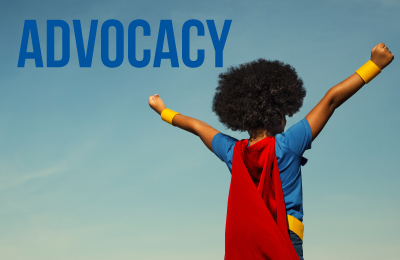
Jan 30, 2020 | Advocacy & Policy, Blog, PSE Approach & Strategies
 Have you attended an Eat Smart Move More South Carolina (ESMMSC) meeting or event and felt annoyed that your only beverage options were water and unsweetened tea? Or that your only food options were salads, wraps, or grilled chicken? There’s a reason for that! ESMMSC has a Healthy Meetings and Wellness Policy that supports its mission and work: to advance community-led change to reduce obesity, by making the healthy choice the easy choice for every South Carolinian.
Have you attended an Eat Smart Move More South Carolina (ESMMSC) meeting or event and felt annoyed that your only beverage options were water and unsweetened tea? Or that your only food options were salads, wraps, or grilled chicken? There’s a reason for that! ESMMSC has a Healthy Meetings and Wellness Policy that supports its mission and work: to advance community-led change to reduce obesity, by making the healthy choice the easy choice for every South Carolinian.
Many organizations and businesses are implementing healthy meetings and events practices. To send the message that health is important to them, to help support the health of the employees, members, and partners, and to have more energized and engaged participants, organizations and businesses should adopt healthy meetings and events policies too.
“If we served sugar-sweetened beverages, fried foods, and went heavy on refined carbs at our meetings and events where food is served, it would completely go against everything our organization stands for,” said Meg Stanley, executive director at ESMMSC. “We care about the health of everyone we come in contact with, so it just makes sense to have these types of policies in place and to implement them.”
Far too often, organizations and businesses serve unhealthy breakfast, lunch, and snack foods at conferences and meetings. And that’s easy to do when there aren’t policies in place that provide guidelines.
“For example, if you’re a health insurance company and your mission, in part, is to keep healthcare costs down, serving fried chicken at a meeting makes it hard to say you’re staying true to your mission,” says Stanley. “The same is true for any business, small or large. If you care about employee health and wellness, you should have a policy in place and enforce that policy.”
Since its inception in 2007, ESMMSC has maintained and implemented a Healthy Meetings and Wellness Policy: Given our mission to make the healthy choice the easy choice for every South Carolinian, ESMMSC aims to create a workplace that promotes and supports healthy lifestyles for both employees and partners. As such, ESMMSC has adopted the following wellness policies: Healthy Meetings and Catering, Movement Meetings, Physical Activity Opportunities, Sharing Food, and Staff Wellness.
Each of these policies provides opportunities to those who attend ESMMSC meetings and events, as well as staff, to eat healthy foods and to engage in healthy activities. Download the ESMMSC policy.
“I’ll be honest, when I started working at ESMMSC eight years ago, I wasn’t thrilled about the policies, but I’ve come to appreciate them. They make me accountable for my health and wellness,” says Brandie Freeman, communications and marketing manager at ESMMSC. “With these policies in place, I drink more water, snack on fruits instead of chips and candy, and have managed to eat more vegetables with my meals. I mean, I’m not perfect. I still indulge, but I don’t do it quite so often.”
If your organization or business would like to adopt a Healthy Meetings and Wellness Policy, there are a couple of reputable resources available online. You can also contact ESMMSC.
- The American Heart Association’s Healthy Workplace Food and Toolkit
- Center for Science in the Public Interest’s Healthy Meetings Resources
Adopting a Healthy Meetings and Wellness Policy is a great way to highlight the culture of health within your organization or business and be part of the growing movement around health and wellness. For more information, contact Executive Director Meg Stanley at meg@eatsmartmovemoresc.org or Manager of Policy and Advocacy Phil Ford at phil@eatsmartmovemoresc.org.

Jan 30, 2020 | Advocacy & Policy, Blog, PSE Approach & Strategies
 Whether you realize it or not, you’ve probably been advocating for things throughout your life. Did you ask your parents for a pet and give them reasons why you deserve one? Have you ever asked your boss for a raise and explained why you deserve it? What about raising concerns about your loved one’s healthcare with their provider? If you answered yes to any of these questions, then you are an advocate.
Whether you realize it or not, you’ve probably been advocating for things throughout your life. Did you ask your parents for a pet and give them reasons why you deserve one? Have you ever asked your boss for a raise and explained why you deserve it? What about raising concerns about your loved one’s healthcare with their provider? If you answered yes to any of these questions, then you are an advocate.
Advocacy is an activity by an individual or group that aims to influence decisions within political, economic, and social systems and institutions. Advocacy is presenting a problem or a need to elected officials, and it’s almost always accompanied by a solution.
“One thing my mom used to tell me growing up: don’t just come to me with a problem. Come to me with a solution as well,” says Phil Ford, manager of policy and advocacy. “It’s important for legislators to be made aware of the problem but it’s even more important to let them know that you want to work with them to find an appropriate solution.”
Advocacy is, perhaps, the most effective way to make change happen on any level of government because the issues directly impact the day to day lives of every citizen in a town or county – not to mention the state.
Communicating with your elected officials is important. They often only hear from constituents when they need something. It’s just as important to thank them for a vote on a bill or resolution, or for standing with you on the issues.
“Don’t be afraid to contact your decision-makers. They often hear from constituents only when something is needed, but they’re not recognized when they do the “right” thing. So, when you notice a decision-maker who’s done the “right” thing, thank them and let them know,” says Ford.
Everyone can advocate. Whether it’s asking your own legislator for support or only distributing facts to elected officials, every individual has the right to advocate. Use our Steps to Effective Advocacy handout to guide you through your next advocacy campaign. For a further explanation of advocacy, download our What is Advocacy handout.

Feb 4, 2019 | Blog, PSE Approach & Strategies

Jean Crowther, Alta Planning + Design
Part One of this topic discussed the meaning of walkability and why it matters. However, even for communities where citizens and elected officials rally behind the value of walkability and are ready to make improvements, it can be difficult to know where to start. Here is a quick and easy guide to the first steps a community should consider:
- Identify Partners
Begin by bringing together the local partners who have a vested interest in creating a more walkable community, whether that is local government staff, an Eat Smart Move More chapter, an informal walking or running group, neighborhood associations, or senior citizens groups. This should also include potential partners in planning and funding, such as the regional Council of Governments, Metropolitan Planning Organization, SCDOT, and local foundations.
- Create a Comprehensive Pedestrian Master Plan
The plan should include an assessment of pedestrian needs, recommendations for new or improved pedestrian infrastructure, policies, and programs, and action steps for seeking funding and implementing recommended projects. Once complete, the Plan should be adopted by the local council and the community should identify a municipal department or local advocacy group that will spearhead moving it forward.
If a community already has a plan but is not sure how to prioritize its recommendations, or if a community does not have a plan, but does not quite have the capacity to develop one, here are some strategies for finding some catalyst projects that will build momentum for change:
- Calm the Traffic
There are a number of low-cost, easy-to-implement strategies that can have a big impact on the safety and practicality of walking, without requiring large capital projects. Look for opportunities to calm traffic on streets that are already known as walking routes but are not ideal in terms of pedestrian safety and comfort. Traffic calming can be an effective tool for prioritizing pedestrians over cars on neighborhoods streets.
- Activate the Street
Rather than calming the traffic on busier streets, consider ramping up the pedestrian amenities on lower-volume streets or streets already safe and comfortable for pedestrians. The focus is creating a space that is inviting, interesting, and fun for pedestrians whether through wayfinding signage, creating parklets, installing outdoor art, allowing outdoor café seating, or hosting temporary ‘open streets’ events to encourage play.
- Close the Gaps
The best way to leverage existing investments is to close the gaps in the existing walking network. The most obvious approach is to identify blocks where the sidewalk is missing and could connect two existing sections. But closing the gap can also include: improving the crossing at a difficult intersection between two sections of sidewalks; signing a route to show pedestrians the best way to connect from one trail to another; or identifying bridges (whether creek crossings, overpasses, underpasses, or another form) where no safe pedestrian access is provided and prioritizing improvements to that gap.
- Take the Long View
Consider focusing on policy changes as a first step, knowing that it will take time to see its impact. Choosing to walk for transportation is inextricably linked to land use planning, which is governed by local policies. If residential areas are planned miles away from institutional and commercial destinations (such as schools, restaurants, or grocery stores) or are developed without connections to the destinations that are nearby, citizens will never have a chance to choose walking. Local and County policies can directly impact this; and though it takes time, policy change can be one of the most efficient, and sustainable approaches to transforming a community.

Feb 4, 2019 | Blog, PSE Approach & Strategies

Jean Crowther, Alta Planning + Design
What is walkability? The most basic definition is simply, “the ability to walk.” However, true walkability is so much more than that. It can affect everyday decisions and quality of life in ways you may not even realize.
Last week my husband realized that he often opts not to walk to work because of time, but when considered in the larger context of his schedule, it is actually his most efficient commute choice. For him, walking requires a 25-minute walk at a relatively fast pace. When he drives, the total trip from our driveway to the office door takes about 15 minutes (parking and traffic included, which many people forget to factor in their estimate of travel time). This means that on the days he walks to work, he spends 50 minutes on his roundtrip commute and gets 50 minutes of moderately vigorous physical activity. Compared to a 30 minute round trip commute with zero physical activity, he has added 20 minutes to his trip but gained 50 minutes of exercise. That’s a pretty good deal!
So if you consider exercise an important part of the week – and particularly if you have a hard time finding the time to exercise like we do – you can easily see the value of walkability, whether it applies to the trip to work, or choosing to walk to the bank, library, school, or park.
But everyday decisions like my husband’s only exist in communities where walking is possible and practical. Communities with optimal walkability embody three main principles:
- Physical Access
Physical access is the cornerstone of walkability. In a walkable community, people must have a safe means of traveling somewhere. This means that there must be a physical path marking the entire route where pedestrians are allowed. Without accessible sidewalks and trails, pedestrians are unable to safely walk anywhere.
- Place to Go
Physical access may provide a means of getting around, but in order for a community to be truly walkable, there must be an end to that means. Sidewalks with no points of destination aren’t very effective. Instead, trails, paths, and sidewalks should connect residents’ homes with their workplaces, schools, stores, transit stops, culture, and restaurants.
- Proximity to Home
Proximity to home is another key component of walkability. A general rule of thumb is that desirable destinations should be within a half-mile of homes for a community to be considered walkable–that’s about a 10-minute walk.
Why is walkability so important?
With each of these variables defined, it’s also important to ask why walkability is so important. Our bodies weren’t designed to sit all day. In fact, long periods of sitting have been linked to problems with our muscles, bones, and even brain function. In a culture where work often consumes our lives, it’s no surprise that one of the most common excuses for avoiding exercise is, “I don’t have time.” We wake up, get ready, drive to work, drive home, and then take care of our children. Where does exercise fit into our responsibilities?
According to a study by the AAA Foundation for Driver Safety, American drivers spend an average of 46 minutes driving each day. Imagine living in a community where you are able to walk to work, school, and other activities. Instead of carving out extra time reserved for exercise, walkable communities allow us to incorporate physical activity into routine parts of our day that already exist. It’s no surprise that walkable communities have a lower incidence of obesity and diabetes.
Consider the benefits of walkable communities. Do you think walking is important? Are you interested in making your community more accessible and focusing on walking as a priority? Stay tuned for part 2 of this post where we will share ideas for improving walkability in your community. And in the meantime, check the Health + Planning Toolkit developed by Wholespire and its partners, to learn how you can help facilitate healthy change where you live.

 Have you attended an Eat Smart Move More South Carolina (ESMMSC) meeting or event and felt annoyed that your only beverage options were water and unsweetened tea? Or that your only food options were salads, wraps, or grilled chicken? There’s a reason for that! ESMMSC has a Healthy Meetings and Wellness Policy that supports its mission and work: to advance community-led change to reduce obesity, by making the healthy choice the easy choice for every South Carolinian.
Have you attended an Eat Smart Move More South Carolina (ESMMSC) meeting or event and felt annoyed that your only beverage options were water and unsweetened tea? Or that your only food options were salads, wraps, or grilled chicken? There’s a reason for that! ESMMSC has a Healthy Meetings and Wellness Policy that supports its mission and work: to advance community-led change to reduce obesity, by making the healthy choice the easy choice for every South Carolinian.


